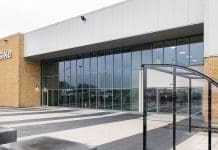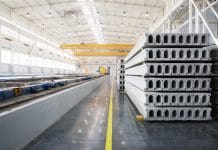Kevin Lea, SVP product management at ALLPLAN, discusses the most important AEC industry trends for construction professionals
The past year has significantly disrupted the architecture, engineering, and construction (AEC) industry as we know it. No other event has created the changes that have been made with such pace and innovation, accelerating the (previously slow) transformation of construction into a leaner and more digitalised sector.
Moving forward, these five trends will be the current hot topics across the AEC industry:
-
Hybrid business models
As a result of the Covid-19 pandemic, many design firms are switching to hybrid business models by providing their teams the flexibility of both office and remote working. This flexibility also provides comfort to business owners that no matter what crisis may arise in the future, projects and commitments can still be fulfilled whilst still delivering the quality of information their clients have come to expect.
-
Digital communication
During these unprecedented times, the construction industry’s reliance on technology has never been higher. The ability to efficiently share design data in both 2D & 3D forms is the lifeblood of every project, but to do so at a time when we have reduced human interaction demonstrates the vital importance of both the quality of the data we create and the digital tools with which we chose to communicate. With remote working now set to be an essential requirement across the AEC industry, this expectation emphasises that digital communication methods will ultimately become the foundation of the whole industry. Therefore, the need to digitally link design software to the entire project team becomes even more critical.
-
Data management
Now that digital processes are being increasingly adopted, significantly more data is being considered throughout the design and construction processes. From running cost studies on scheme options, investigating the ease of buildability during construction, or determining the facilities management requirements of a building, the amount of data that is being produced has increased drastically.
In addition, more companies are embracing advancements in emerging technologies which rely heavily on data, such as digital twins and the use of artificial intelligence. This, therefore, raises the question of how we practically handle large sets of data efficiently using the computer power available.
-
Cloud technology
Underpinning the switch to digitalisation and remote working is, of course, the adoption of cloud technology. Cloud technology is the only practical way to handle and process extremely large data sets. This is not just about storing data, but also about how the data is processed – certain tasks can be processed more efficiently using cloud technology. The flexibility to share data anywhere, anytime also comes from access to the cloud and is extremely valuable for dispersed project teams, particularly in the current climate. Of course, some customers may have concerns about the use of cloud technology. However, as an industry we must learn to embrace it, as this will be the only practical manner in which we can handle a digital world.
-
Offsite manufacturing
The challenges of upholding social distancing rules in construction are significant, and therefore the benefits of pre-manufacturing processes (especially in the precast market) have never been clearer. Off-site manufacturing is enabling construction to continue in a controlled manner by reducing on-site activities leading to both efficiencies in delivery whilst supporting social distancing principles.
Supporting the ‘new normal’
At ALLPLAN, our aim is to provide our clients with the right tools to keep up with current issues and innovations, either locally or in the cloud. Our solutions have been developed specifically to support these trends in the AEC industry, such as enabling digital communication, information sharing, and remote working with Allplan Bimplus, our cloud-based data management platform.
In addition, our Allplan Share technology allows our clients to work simultaneously on the same project from numerous locations, supporting the shift to remote working.
Another initiative we have introduced is to bring new workflows with structural analysis software via the new SCIA AutoConverter. This allows customers to quickly and efficiently process an Allplan model into a structural analysis wire model using cloud technology. The benefit is that it produces a model exactly the way a structural engineer wants to see it, without the modeller requiring structural skills or compromising the coordination model. Any structural analysis system can now link intelligently with tools such as Allplan via a straightforward Microsoft Excel file, thanks to a new open file format which has been specifically developed by Nemetschek, called the Structural Analysis Format (SAF).
The greater emphasis on offsite construction and lean manufacturing methods has driven an increase in demand for precast concrete products. Therefore, ALLPLAN and Precast Software Engineering have merged competences to create a unique range of solutions that support this. These solutions provide customers with powerful tools that combine the familiarity of 2D design and the need for 2D documentation with the efficiency, automation, and visualization benefits of 3D modelling.
As the AEC industry will increasingly rely on digital documentation and interconnected project data, having this complete solution range will enable our customers to efficiently create their deliverables and easily coordinate with other project participants.














